You must be logged in to post a review.
Duque de Berwick – 1707
€89.00
Figure to assemble and paint
Ref.: 13 – GE
Weight: 150 grs.
Material: White Metal
Number of Pieces: 13
Historical Review:
James Fitzjames. Duke of Berwick. Duke of Fitzjames. Duke of Liria and Jerica. He was born on 21 August 1670 in Moulins, France and died in Philippsburg, now Germany in 1734.
He was the natural and acknowledged son (with the surname Fitz-James) of James or James Stuart, Duke of York, brother and heir presumptive to King Charles II of England, and Anabella Churchill. He was the eldest of four siblings born to this relationship. From the age of seven he was educated in France in the Catholic religion, which was that of his father. In 1685, the Duke of York succeeded his father as King of England.
The particle Fitz derives from the French ‘fils’ through Norman and means ‘son of’. It was used by the kings of England to name their illegitimate children, who lacked a surname. In this case the surname Fitz-James Stuart (Fitzjames) means ‘son of James Stuart’.
Berwick returned to England and was made governor of Portsmouth. King James II made him a knight of the Garter, but due to the invasion of the Prince of Orange and the subsequent Glorious Revolution, the ceremony never took place. The following year, James was overthrown, and Berwick went into exile with him, taking an active part in the Irish campaign, including the Battle of the Boyne. After his father’s final exile, Berwick served in the French army. He fought in the battles of Steenkerque and Landen. At the latter, Berwick was taken prisoner but was exchanged for the Duke of Ormonde. Because of his support for his father, he was forced to renounce his British titles of nobility.
In the service of Louis XIV, who had appointed him lieutenant-general of his armies (an Englishman at the head of a Franco-Spanish army, facing Ruyigny, a Frenchman at the head of an Anglo-Portuguese-Dutch army). He fought in Spain at the head of the French troops in the War of the Spanish Succession in favour of the rights to the Crown claimed by the Duke of Anjou (the future Philip V), grandson of Louis XIV. In this conflict he achieved several successes that strengthened his military prestige. Among them was the victory at Almansa in 1707 against the forces of Archduke Charles of Austria, which led to the subsequent conquest of Valencia and Aragon.
He continued his offensive on Catalonia, and in the spring of 1714 began the siege of the city of Barcelona, which he did not conquer until September. Once the occupation was over, he set about imposing the new French-inspired centralist laws in Catalonia (Nueva Planta Decree), which abolished traditional Catalan institutions.
His loyalty to the French Crown became clear when he declined Philip V’s offer to remain in his service and returned to France. Thus, in 1719, he did not hesitate to fight against Philip V from the Navarrese and Catalan borders to force him to accept the dictates of the Quadruple Alliance. Previously, in 1715, he had refused command of the Jacobite forces to continue as an effective servant of France. In 1734, during the siege of Philippsburg in the War of the Polish Succession, he was killed on the battlefield by a cannon shell at the age of 64.
In 1695 he married the Irish lady Honorata Burke, widow of Lord Lucan, in Saint-Germain-en-Laye, where the exiled Jacobite Court resided. From this marriage a son was born Jacobo Francisco Fitz-James Stuart, 2nd Duke of Berwick, 2nd Duke of Liria, 2nd Duke of Jerica, widowed in 1698, he married another Jacobite lady, Ana Bulkeley. Ten children were born of this marriage, five girls and five boys. All remained in France where the latter pursued brilliant careers in the army and in the Church.
The figure is dressed in good quality, civilian-looking clothes. It is generally accepted that the concept of the uniform was introduced in 1710. The embroidered fleur-de-lis, the emblem of the French royal house, can be seen on the saddle cloth.

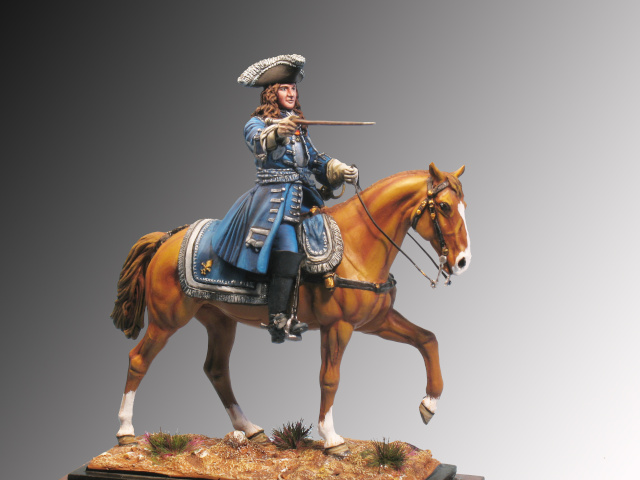
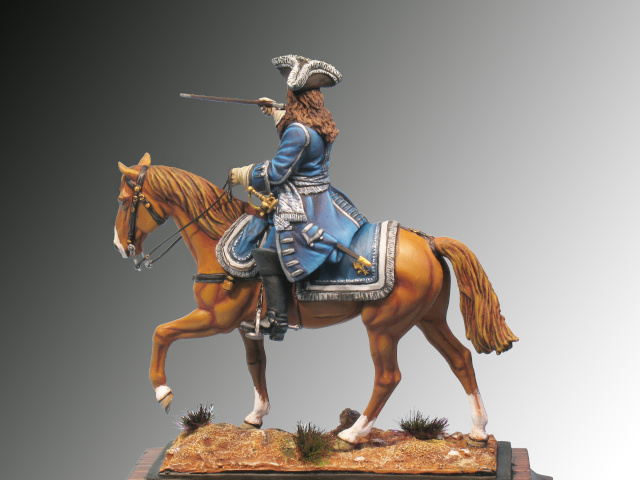


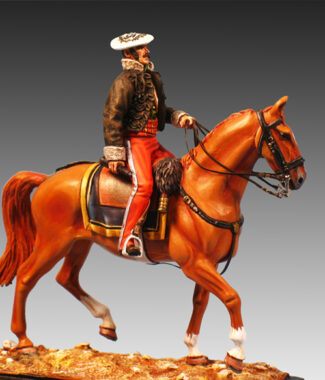
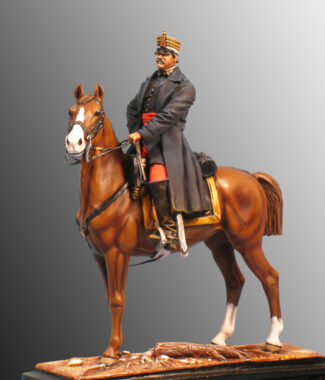
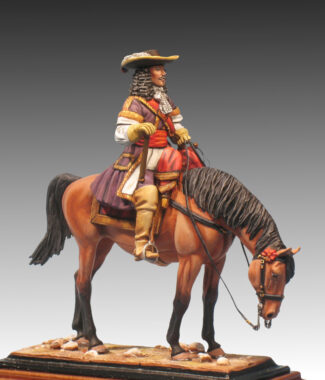
Reviews
There are no reviews yet.